Today
1. A talk about manifestos // 2. A Video by John Maeda on the Future of Technology & Art // 3. Notes on Your Assignment // 4. Designing your manifesto // 5. An in class-task (split into groups of 4 at the start of class – you will need one laptop).
Talk, Links, Notes & Quotes
There have been many manifestos written to frame, propose, reject and set out the parameters for individual’s artistic or design practice or for groups or organisations trying to direct a movement in a certain direction. The aim of this task is to research into the different approaches that artists take in the production of their work either as individuals or collectives and to begin to outline a proposal for our own Manifesto for Creative Technologies.
The manifesto you produce is very much like a wish list of things that you do and don’t want from your journey of experimentation and learning in this course. Think about the things you are interested in, that you want to research and develop into your own work. I’ve included several different styles of manifestos here ranging from designer’s and design collectives manifestos through to art groups through the ages. These examples set the context and the questions for you to answer in your manifesto which you will design and upload to your WordPress blog.
From Manifestos by short lived groups such as ART CONCRET to the currently popular Maker Movement where we are given the invitation:
“In the spirit of making, I strongly suggest you take this manifesto, make changes to it, and make it your own. That is the point of making.” from The Maker Movement Manifesto by Mark Hatch
And this is exactly what we will do here. We will take inspiration from the manifestos that I will share with you and from those that you discover in your research as we each write our own Creative Technologies Manifesto. You can create this manifesto in any form you wish. It could be spoken as a YouTube video, designed as a poster in Photoshop,
What is the point of a Manifesto?
“A manifesto is a published verbal declaration of the intentions, motives, or views of the issuer, be it an individual, group, political party or government.” from Wikipedia
So for the Art Concret movement for example their manifesto outlined the process by which each painting would be made. This included not only what should be done but also what should not be done for example:
“The construction of a painting, as well as that of its elements, must be simple and visually controllable.”

“A work of art must be entirely conceived and shaped by the mind before its execution. It shall not receive anything of nature’s or sensuality’s or sentimentality’s formal data. We want to exclude lyricism, drama, symbolism, and so on.”
So in this statement they were rejecting previous art movements like realism in part to try to create something new that was disconnected from what might have been considered bourgeois art movements.
Another well know manifesto that preceded the art work that were created under its banner was the, highly controversial, Manifesto of Futurism which was published in the Italian newspaper Gazzetta dell’Emilia in Bologna on 5 February 1909 . It set out a philosophical approach to living life and creating art that called for some pretty radical actions such as writing “We will destroy the museums, libraries, academies of every kind, will fight moralism, feminism, every opportunistic or utilitarian cowardice.” and seemingly absurd statements such as this: “We will glorify war—the world’s only hygiene—militarism, patriotism, the destructive gesture of freedom-bringers, beautiful ideas worth dying for, and scorn for woman.”. [full manifesto can be read here]
The paintings and artworks of Futurism were pretty impressive in their developments of new approaches but sit against the backdrop of the rise of fascism. What is interesting is the broad range of topics that were seen as important in forging an artistic movement. It talks a lot about embracing new technology, the importance of the motor car and of rejecting existing establishments such as museums and universities.


More recently in 1960 the Fluxus Manifesto was created.

- Paul Sharits – Word Movie (1966)
- John Cavanaugh – Blink (1966) (strobing)
- Yoko Ono – Eye Blink (1966)
The Fluxus artists work was often playful
There are also philosophical Manifestos that link together the idea of contemporary themes such as the computer hacker with wider communities of makers, designers, artists etc… And example of this is The Hacker Manifesto by McKenzie Wark which critiques the commodification of information. The quote below highlights how we could all be considered to be hackers.
“Where does new information come from? From what I would call the ‘hack’. It doesn’t matter if you are a programmer, a philosopher, a musician, a bio-chemist, if you produce new information, that’s a hack. I want to expand the meaning of the word beyond a narrow, specialized field. Because I think that all kinds of new information production are now rendered equivalent by the regime of intellectual property. The market makes what we all do equivalent.” quote from an interview with McKenzie Wark writer of the Hacker Manifesto
This idea that all new information, for example an artistic creation, is in fact a hack is something interesting to consider. If we look at this painting by Alexander Calder titles Homage to the Sun.

Then we could argue that this video uses a mixture of the ‘maker’ & ‘hacker’ philosophy to create something new that in turn has its own beauty but that could not have been created without the original.
‘Calder’ Paintings in 3D from Shkelzen Kernaja on Vimeo.
John Maeda: How art, technology and design inform creative leaders
The Assignment: Creative Technologies Manifesto (10%)
Write a 12 point manifesto for the creative technologies that defines a considered approach to developing creative projects in this field. Use some of the examples of artists & artistic organisations working with creative technologies as well as the manifestos discussed in class as your starting point.
Supplementing the manifesto you should reference 2 or more works from artists that exemplify this way of working. Include where they were distributed, located or displayed, name the specific technologies being used by the artists referenced and web-links where possible.
Format: Up to 300 Words – submitted to your blog. (see notes about how to design your Manifesto below)
Due: Start of class on Tuesday 19th January
How To Design Your Manifesto: Using Adobe Illustrator, Adobe Photoshop or Inkscape
Your manifesto should also be designed as a downloadable/printable PDF.
Use the software Adobe Illustrator, Adobe Photoshop or Inkscape to design your Manifesto. For this assignment you should focus on the type design and layout. The type can be totally designed digitally or drawn and then photographed or scanned in.
Here are some good examples for inspiration:

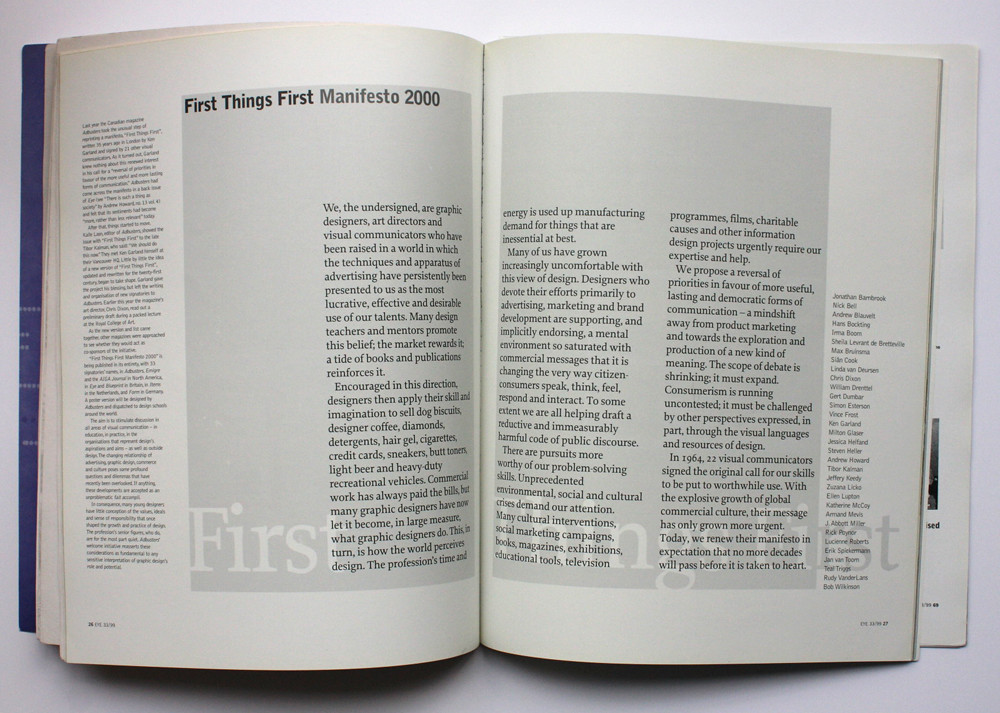
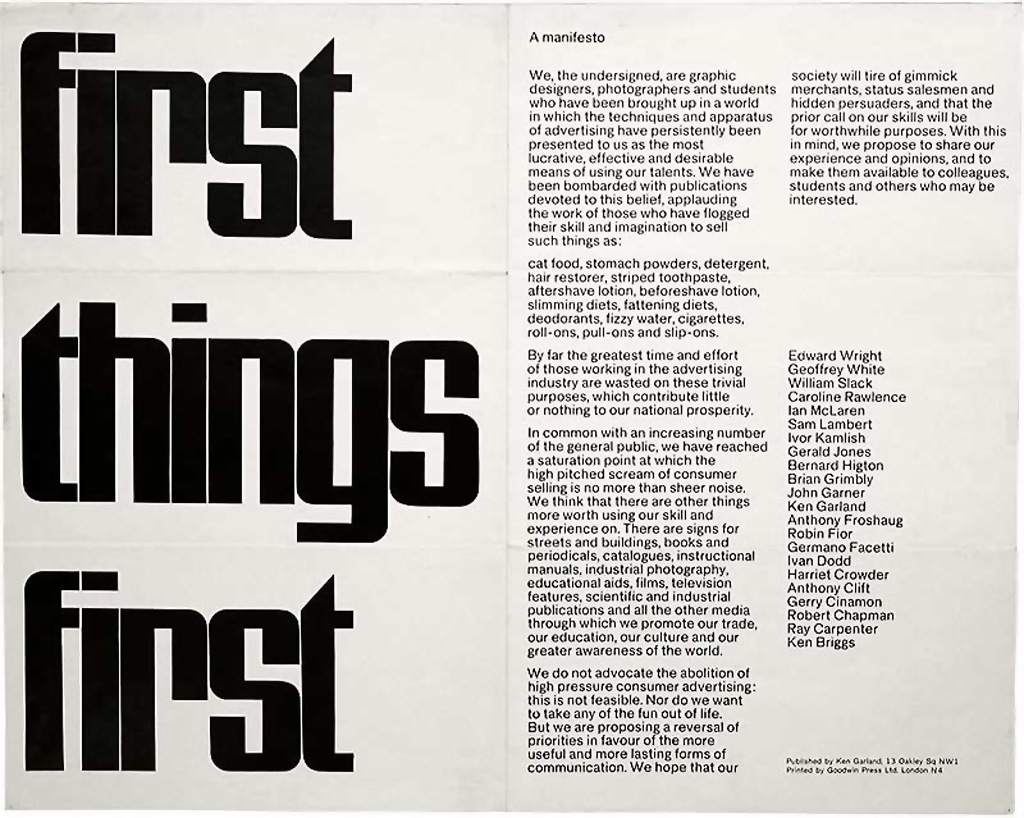
http://www.designishistory.com/1960/first-things-first/

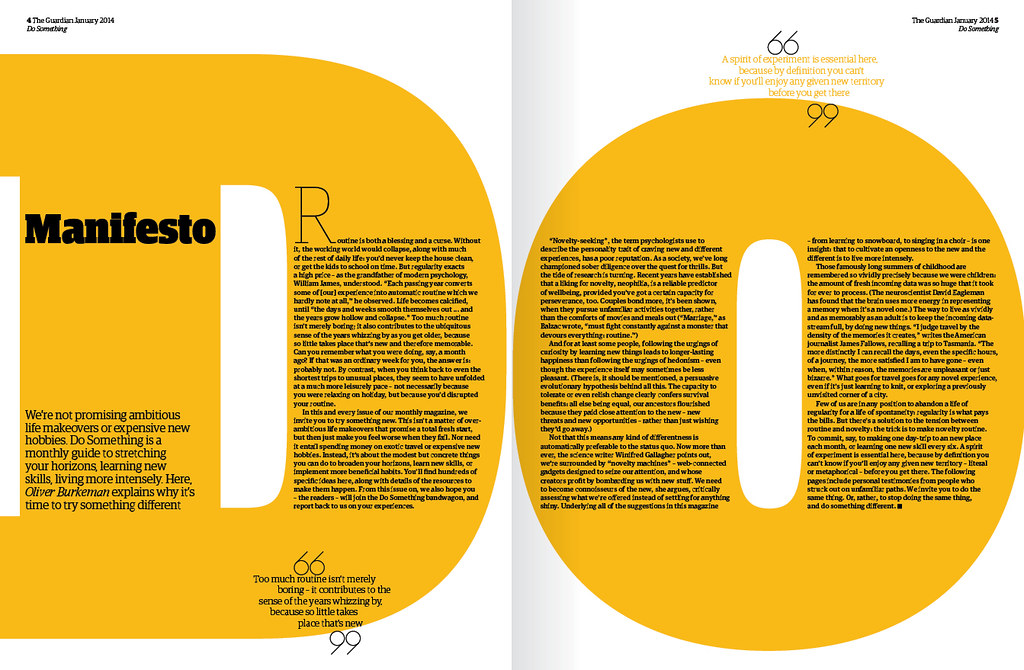
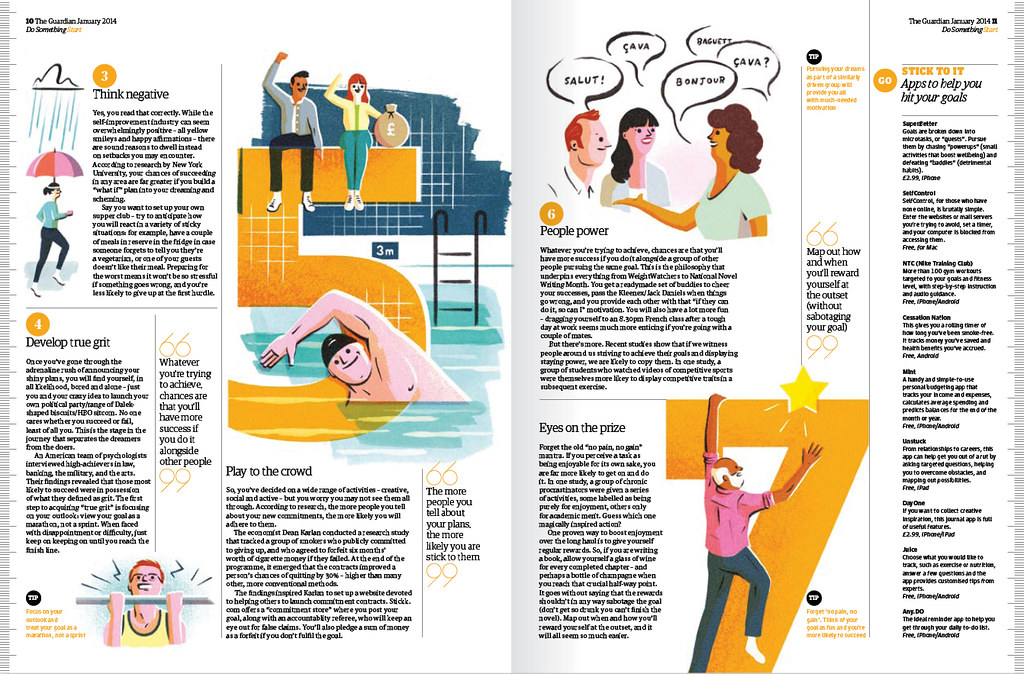

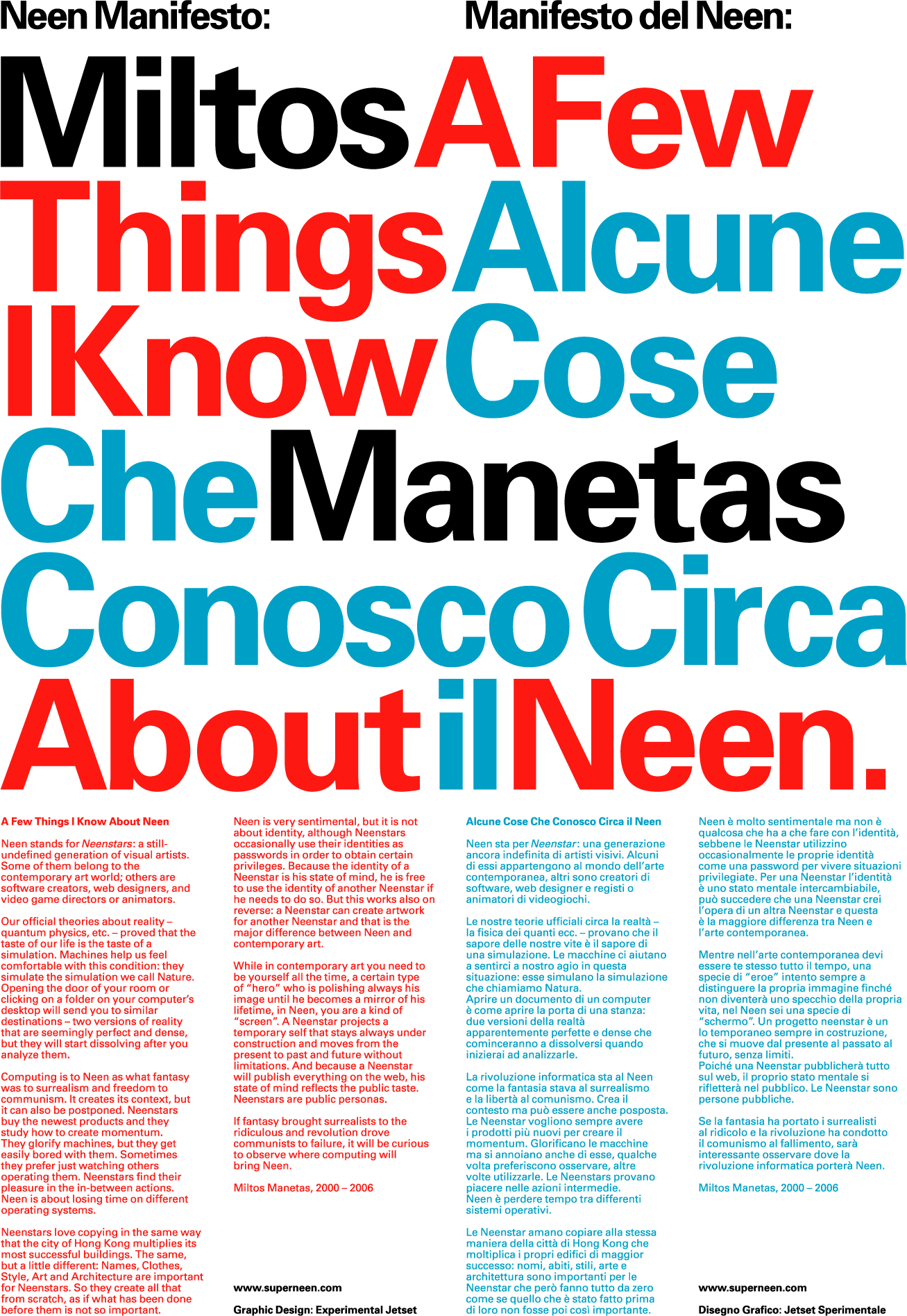

Class Task: Research & Re-Write
In groups of 4 you will look begin the research for your Manifesto Assignment.
Take one quote or point from one of the manifesto listed above.
Attempt to re-write it as a Manifesto Point for Creative Technologies.
Other Manifestos: for your to use in your research
Fluxus Manifesto – Art Collective
Bauhaus Manifesto – School of Design
50 Artists & Designers Tell Us What The Believe – http://www.iconeye.com/404/itemlist/category/534-manifestos
A Pinterest Collection of Manifestos & Designs by Nick Lovegrove
10 game-changing art manifestos By Harriet Baker
11 Design Manifestos You Must Read Today by Beth Caird, 3 October 2013
